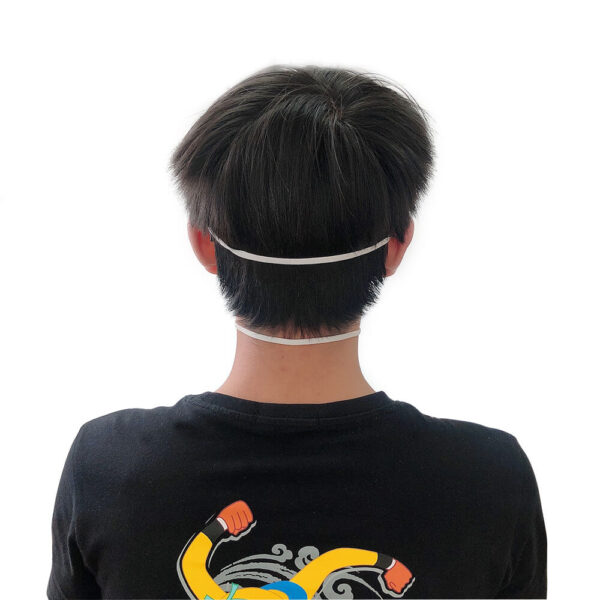How To Ensure A Proper Fit For Your KN95 Respirator
KN95 or N95 respirators are primarily evaluated based on their filtration rates. However, this is by no means the only important metric governing their performance. For a KN95 respirator to be effective, it is essential that it forms a proper fit around the contours of your face. If air is leaking through the interface between the edges of the respirator and the skin of the face, this will render it no more effective than one with an effective seal but a poor filtration rate. In this post, we look at three things you can do to get a proper fit between your face and your KN95 respirator during the process of putting it on.
We will assume that your KN95 respirator uses head staps as a harnessing mechanism, as does the DynaPro KN95 Respirator. Although most other KN95 respirators use earloops instead of head straps, the head strapping mechanism is prevalent among N95 respirators with NIOSH approval. As a result, our comments in this post are also applicable to most N95 respirators.
Test For Air Leakage Around the Upper & Lower Parts Of The Respirator
After putting on your respirator, you should always check for air leakage around its edges. To do this, first place both hands around the upper section of the respirator, one on each side. Keep them close to the respirator but do not actually touch it. Then exhale forcefully and check whether you can feel any air reaching your hands. Repeat with your hands around the lower portion of the respirator, with one hand on either side. If you do not feel any air against your hands, you have achieved a proper fit for your KN95 respirator.
If you do feel air against your hands, you will need to make slight adjustments to the position of the respirator. Then repeat the seal test described above until you do not feel any air against your hands. If you continue to experience air leakage after several adjustments, please follow the suggestions below.
Use Your Respirator’s Nasal Splint To Improve The Fit Of Your KN95 Respirator
Although it may seem an obvious piece of advice, many people forget to use the respirator’s adjustable nasal splint to achieve a proper fit when wearing a KN95 respirator. You should adjust the splint after first applying proper hand hygiene and then donning the respirator. You then gently mold the splint against the contours of your nose. Use two fingers from each hand on either side of your nose. Avoid using two fingers from the same hand to pinch the splint against the contours of your nasal bridge. This technique will often fail to achieve a proper fit of your KN95 against your nose.
Mold the splint against your nose, starting from the center and moving out to both sides. Ensure that the splint is tightly but comfortably following the contours of your nasal bridge. Hint: you can often more easily achieve a proper KN95 fit by starting with the splint as high up on your nose as is comfortable.
Once you have finished molding the nasal splint, use the seal test described above to check that you have achieved a proper fit for your KN95 respirator.
Criss Cross Your Head Straps To Achieve A Proper KN95 Fit

When putting on a respirator with headstraps, most people place the lower strap just beneath the ears. Some may even place it around the neck. They then fix the upper strap above the ears. In some cases, the upper strap may be well above the ears and may actually pass over the crown of the head.
However, one way to improve the seal of your KN95 respirator may be to reverse the position of the headstraps. You do this by slightly lowering the upper strap until it runs only slightly above your ears. Then, raise the lower strap until it is 1-2 inches above the upper strap. The 2 straps should cross each other just above your ears.
The effect of this change is to increase the tension in the lower strap. In addition, the tension of the upper strap may be slightly lower than before. The result should be be a tighter seal with the tensions of the upper and lower straps closer to each other. This may result in a more proper fit of your KN95 respirator.
As before, use the above seal test to confirm that you have achieved a proper fit for your KN95 resporator.
Conclusion
In this post, we have explained the importance of achieving and maintaining a proper fit for your KN95 respirator. Achieving an air tight seal against the contours of your face is just as important as the filtration capabilities of the respirator itself. We have also described three techniques for checking the effectiveness of the seal and for improving it if necessary. As we have mentioned, these techniques are just as applicable to N95 respirators, most of which also use head straps as a harnessing mechanism.







